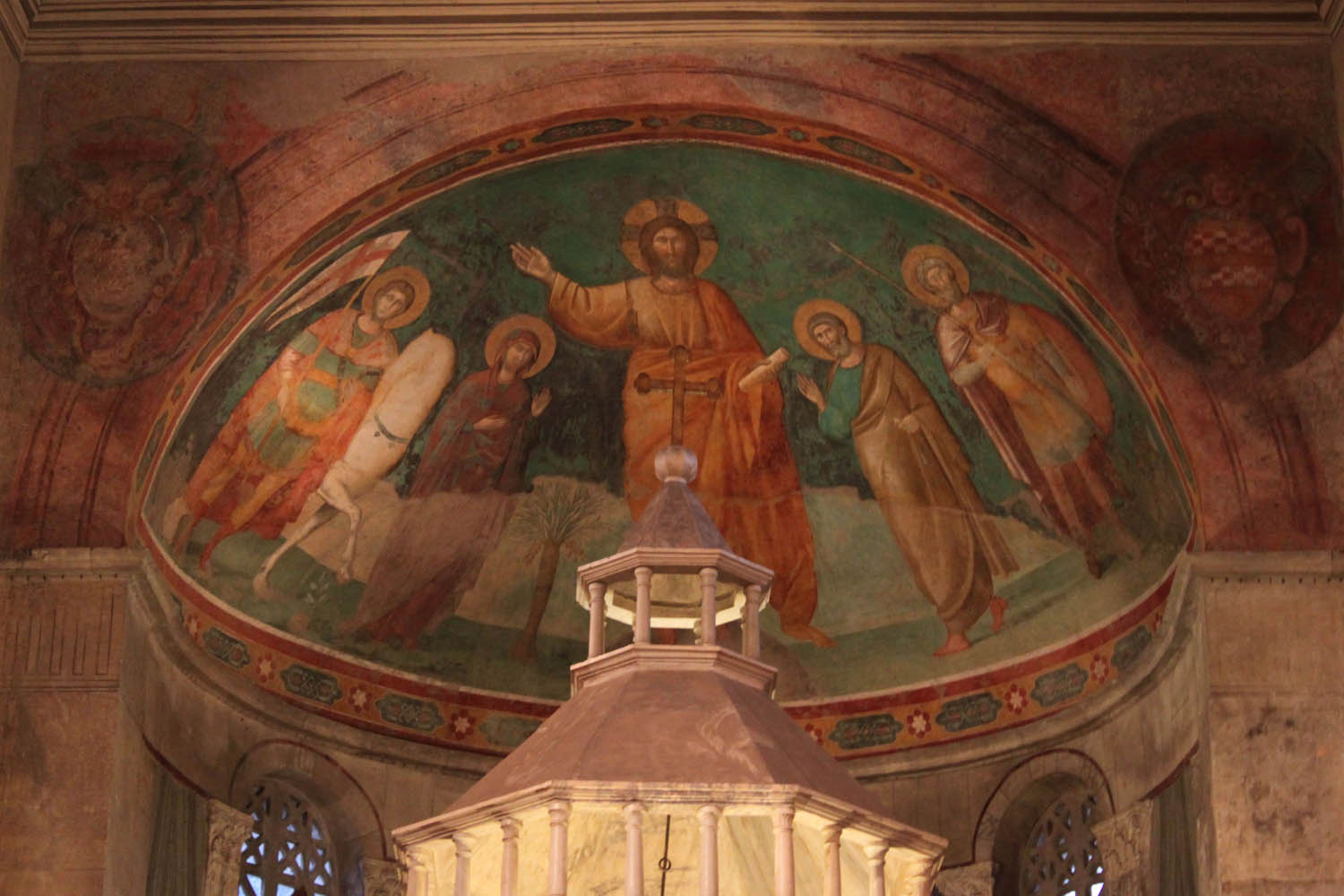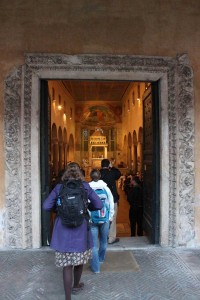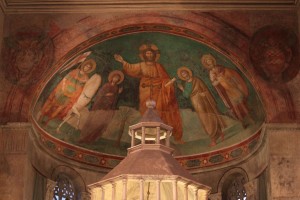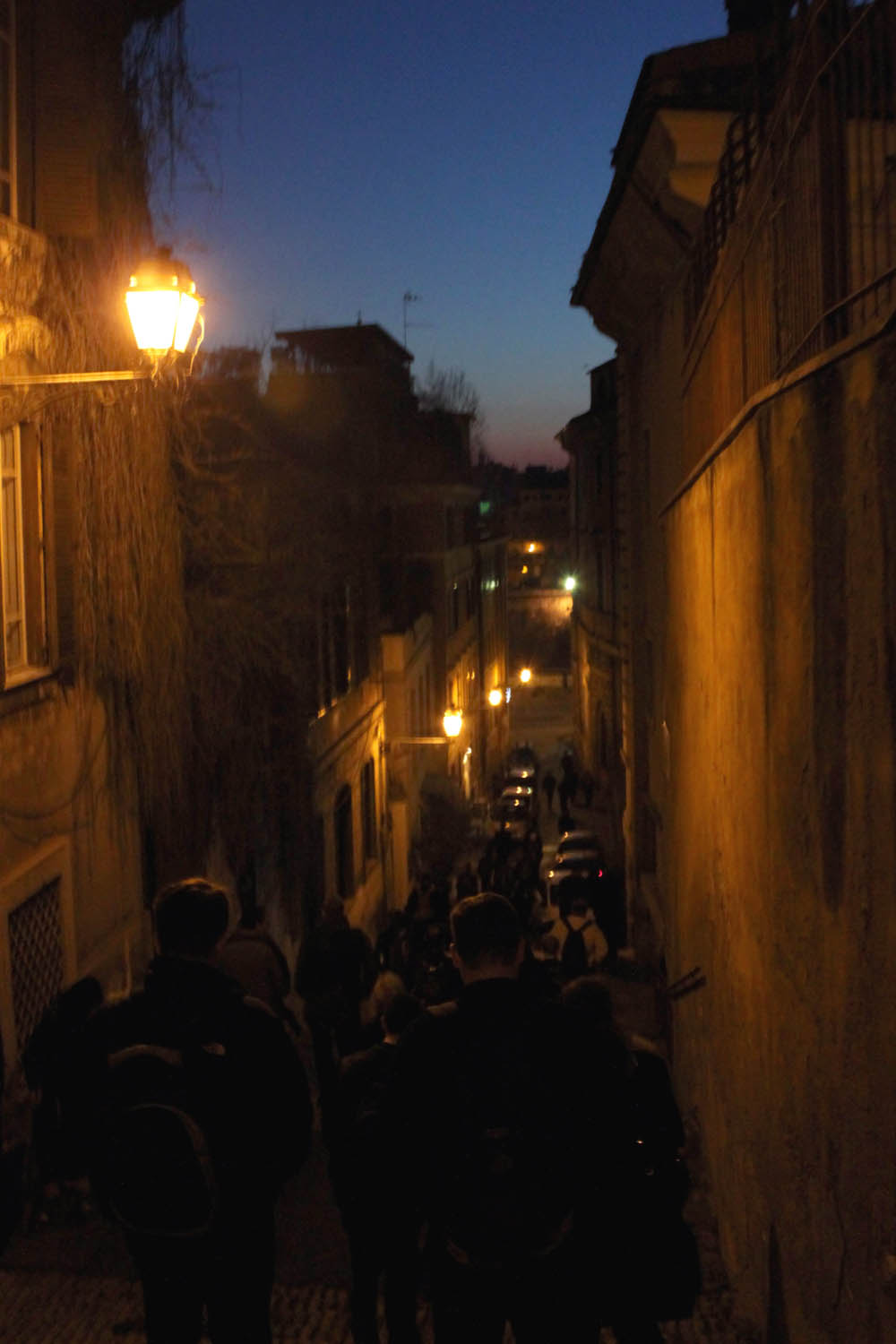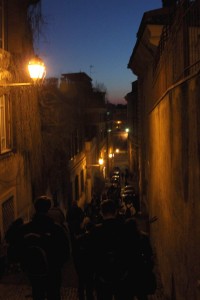Guest blogger Chris Seith and photographer, Fr. Justin Huber guide us through San Giorgio:
Today, the English-speaking pilgrims walked to San Giorgio for the second day of Lent. For those of us at the Pontifical North American College, we began our trek at 6:15 in the morning, walking alongside the Tiber River as the sun rose. The location towards which we were headed has been used by Christians since the late fifth century. Originally, the location was used as a center for social services and was later turned into a church in the ninth century. The Saint it commemorates was a popular martyr during the Diocletian Persecution, the bloodiest persecution of the early Church lasting from the late third century until the year 311. This Saint inspired many soldiers to remain courageous while they struggled to follow Christ. He is also an inspiring Saint for the seminarians at the Pontifical North American College who hope to lay down their lives for Christ as Saint George did. The church is connected to another inspiring figure as well. San Giorgio was the titular church of the newly beatified John Henry Cardinal Newman.
The readings for today connect us in a particular way to the witness of the martyrs. In Deuteronomy, Moses tells us, “I have set before you life and death, the blessing and the curse. Choose life, then…” With these words, Moses reminds the Israelites of the great gift of life which God has given them. No doubt this seemed strange for a people wandering through the desert with no relief in sight. Much like many in our time, the Israelites doubted the beauty of life amidst their many sufferings. Yet in the Gospel, Jesus offers clarity by telling us that “whoever wishes to save his life will lose it, but whoever loses his life for my sake will save it.” Our Lord offers a new perspective on life and invites us today to reconsider the grace of our Baptism. Through this Sacrament, we have become sons and daughters of God. God sees us as having died with Christ and risen with Him. Therefore, when we embrace our daily crosses out of love for God, we live the reality of our Baptism by sharing in the death and resurrection of Jesus Christ. Suffering, then, is not a hindrance to living life abundantly but is rather the very means by which we do so. When we unite ourselves to Him who is Love, life reclaims its original magnificence and beauty no matter what situation we find ourselves in.
Learn more at Church: http://www.pnac.org/station-churches/week-of-ash-wed/thursday-after-ash-wednesday-san-giorgio/

